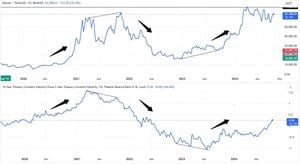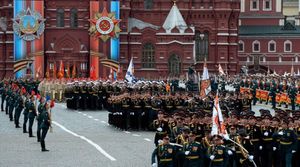With the German Federal Election set for February 25, 2025, recent polling trends indicate the CDU/CSU is leading the pack with 30.1 percent of voter preferences, according to various surveys compiled by research institutes. The anticipation around this election intensifies as party dynamics shift, leaving many wondering which coalition will emerge victorious.
The polling data reveals significant competition beneath the surface. The Alternative for Germany (AfD) follows closely behind with 20.5 percent, raising questions about its potential influence, especially since other parties have publicly ruled out forming coalitions with them, as noted by Friedrich Merz, the CDU/CSU candidate: "A coalition with the AfD is repeatedly excluded."">
Trailing after AfD are the Social Democratic Party (SPD) and the Greens, garnering 15.2 and 13.2 percent, respectively. An interesting development is the Left Party (Linke), which has recently surpassed the five-percent threshold, helping maintain its parliamentary presence, with current support clocking at 6.9 percent, showing gains from previous weeks.
Conversely, the BSW (the party led by Sahra Wagenknecht) finds itself struggling, currently at 4.4 percent, below the threshold necessary for parliament entry, and the Free Democratic Party (FDP) is teetering on the edge with 4.3 percent. Observers must note the importance of coalition potential, especially with shifts among smaller parties creating new political landscapes. The political environment is unstable and could easily result in unexpected outcomes.
These polling figures are not just numbers but reflect the changing attitudes of the electorate. With the amplification of smaller parties gaining traction, potential coalitions are reshaping possibilities. Recent trends showcase smaller parties inching closer to the five-percent hurdle. Breaking this threshold could significantly alter the parliamentary power dynamic.
Focusing on the different polling data sources, there exists quite the range of estimates for party support. The CDU/CSU sees results between 28 and 32 percent across different pollsters, highlighting the volatility of voter sentiment as the date approaches. The variation is observed similarly within the AfD's range from 20 to 22 percent, demonstrating the uncertainty among the electorate.
How these potential coalitions may play out is quite complicated. If the CDU/CSU were to be officially verified as the leading party post-election, they would still face considerable strategic decisions about their partnerships. A two-party coalition with either the SPD or the Greens may become feasible, but discussions about involving the AfD have already been dismissed by other party leaders.
Looking forward, all eyes are also on the Hamburg state elections, taking place just one week after the federal vote. Polls suggest the SPD holds comfortable leads there, reflecting local electoral dynamics versus national concerns. Voter turnout and satisfaction attempts might diverge significantly between state and federal elections, creating added layers of complexity for campaign strategists.
The federal political scene remains fluid; even slight percentile shifts could mean the difference between coalition viability or instability. The Forsa Institute's latest surveys reveal CDU/CSU at 30 percent, followed by AfD at 20, SPD at 16, Greens at 13, and the Left at 7 percent, with both FDP and BSW at 5 and 4 percent, respectively. Such close margins suggest significant grassroots organizing may be necessary for these smaller parties.
Insights from all polling indicate the potential fragmentation of the Bundestag; this election might lead to seven different factions within parliament if the current trends hold. The importance of every vote will resonate intensely, especially with margins so slim and varied among party lines.
Conclusion: The climate leading up to the 2025 German Federal Election is rife with uncertainty, excitement, and potential for change. Political players must navigate complex sentiments among voters, alliances, and historical tendencies as they seek to create viable governing coalitions. With polling fluctuated, the room for surprises on election day remains vast, hinting at a dynamic political future for Germany.



